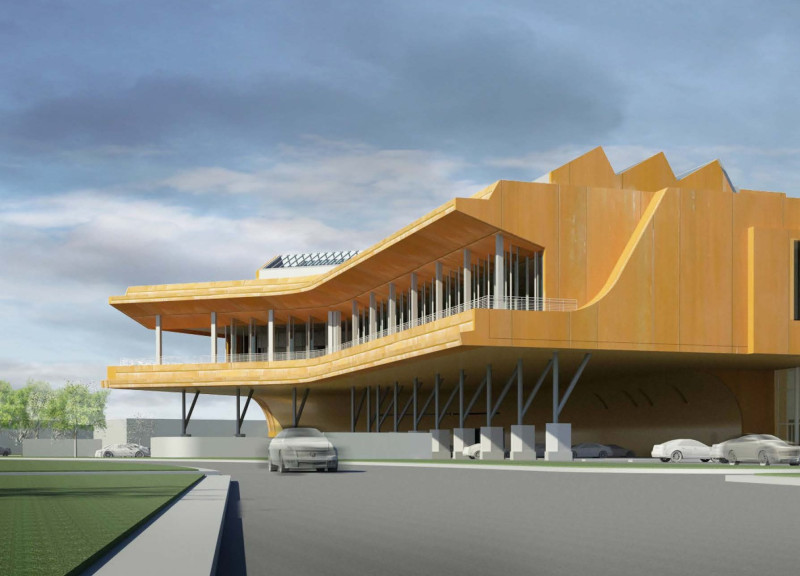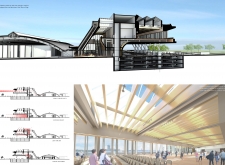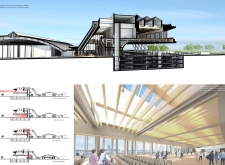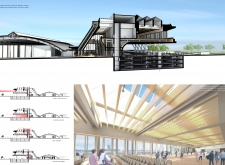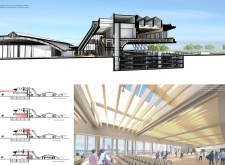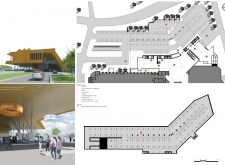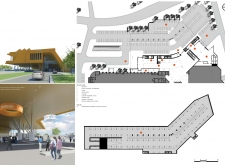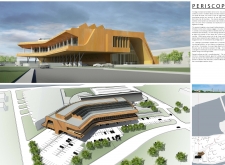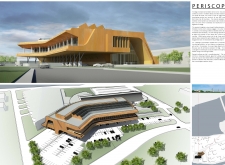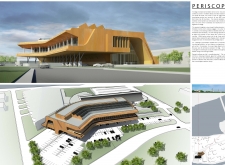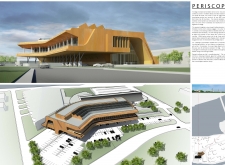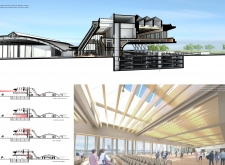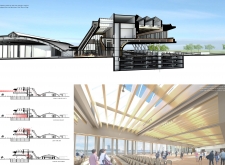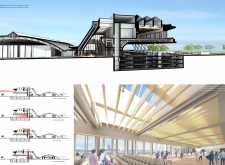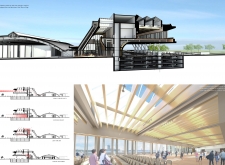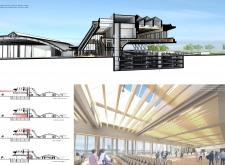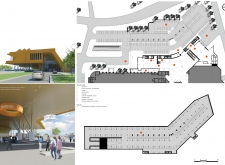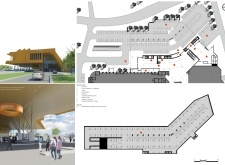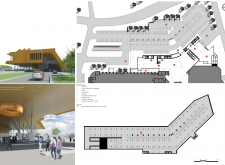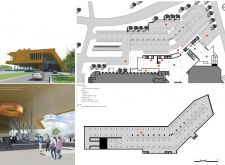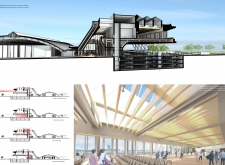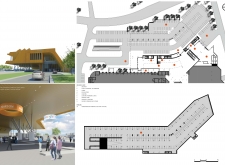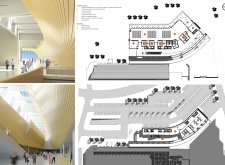5 key facts about this project
The function of the project primarily revolves around multifunctionality, designed to accommodate various activities, including community engagement, collaborative workspaces, and recreational facilities. This flexibility is fundamental to the architectural design, allowing the building to serve a diverse range of users and purposes throughout the day. The thoughtful layout ensures that spaces are not only functional but also conducive to interaction and engagement, fostering a sense of community among users.
Key design elements of the project include extensive use of glass, which allows natural light to flood the interiors, promoting a sense of openness and connection with the outdoors. The façade is a nuanced play of materials, featuring a combination of locally sourced stone and timber, which speaks to the region’s characteristics while supporting sustainability efforts. These materials not only contribute to the aesthetic appeal but also enhance the building’s thermal performance, reflecting a growing awareness of ecological considerations in architectural design.
Unique design approaches are evident in the emphasis on biophilic design principles throughout the project. By incorporating green roofs, living walls, and landscaped terraces, the architecture invites nature into urban life, promoting well-being and ecological awareness among users. The layout includes various outdoor spaces, such as courtyards and gardens, that serve as extensions of the indoor areas, encouraging outdoor activities and social gatherings.
In addition, the project integrates cutting-edge technology with passive design strategies, optimizing energy use without compromising comfort. The use of renewable energy sources such as solar panels, alongside high-performance insulation and natural ventilation systems, underscores a commitment to reducing the carbon footprint and enhancing the building's overall efficiency.
The architectural sections detail how different levels are interconnected, with staircases and ramps designed to create a fluid transition between spaces. This accessibility not only complies with universal design standards but also promotes inclusivity, ensuring all users can experience the architecture's offerings fully.
Incorporating local art and cultural elements into the design reflects a deep respect for the community’s heritage and identity. Artistic installations and mural artworks serve as focal points within the building, creating opportunities for cultural expression and community pride. This attention to local context and identity elevates the project beyond mere architecture, fostering a profound connection between the space and its community.
Ultimately, the project stands as a testament to contemporary architectural thinking—one that prioritizes sustainability, community engagement, and a deep understanding of context. It offers a commendable example of how design can facilitate meaningful interactions among people while remaining respectful of its environment. For those interested in exploring the intricacies of this compelling project further, examining the architectural plans, sections, designs, and innovative ideas will yield deeper insights into its thoughtful execution and the architectural narratives that define its presence.


